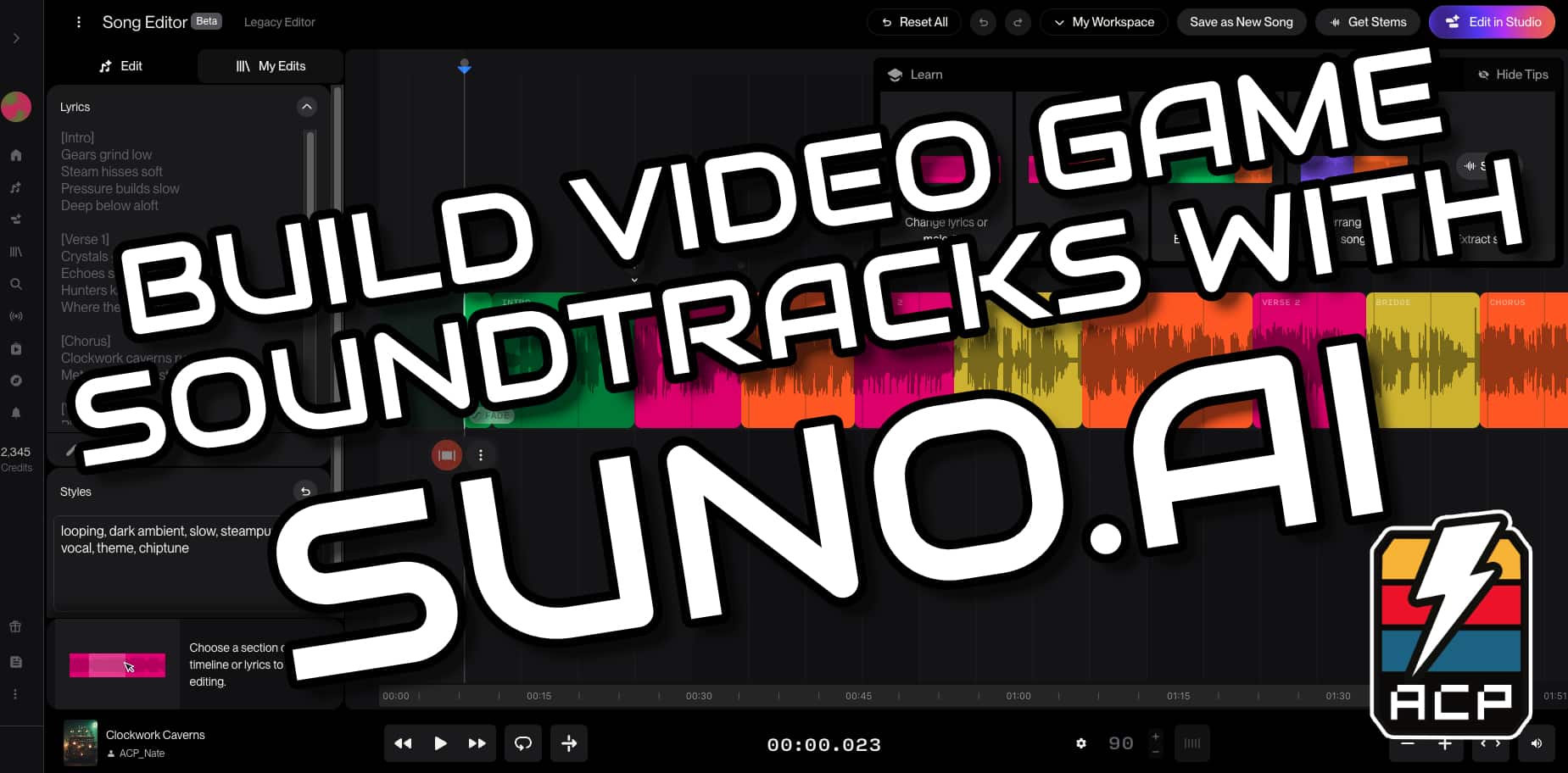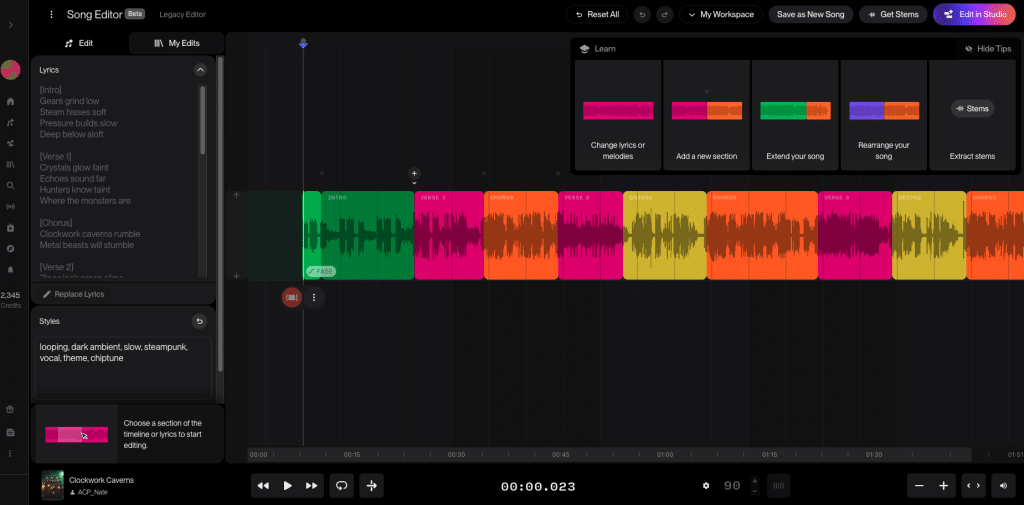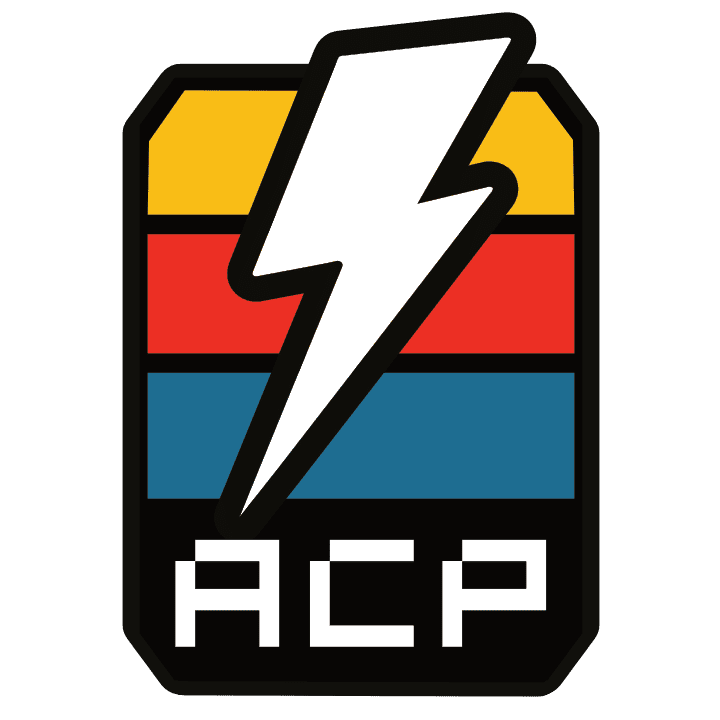Your cart is currently empty!

How To Build Epic Indie Game Soundtracks Check Out SUNO.AI
Indie Game Soundtracks Matter!
Time is precious! As an indie developer, you wear a lot of hats. Creating indie game soundtracks can feel overwhelming when you’re also busy with sprites, coding, story, and community building.
However, music is an important part of immersion. A catchy soundtrack can elevate your game, making players remember your world long after they stop playing. That’s where tools like SUNO.AI can save the day.

👉 Watch this tutorial on Rumble: “How To Build Powerful, Epic Indie Game Soundtracks – Check Out SUNO.AI”
👉 Watch this tutorial on YoutTube: “How To Build Powerful, Epic Indie Game Soundtracks – Check Out SUNO.AI”
Why Use SUNO.AI for Your Indie Game Soundtracks?
If you’re like me, you want to build everything from scratch. I understand that urge completely. Nevertheless, solo developers often don’t have the time or resources to compose full soundtracks on top of everything else.
Some indie devs can find collaborators or hire musicians, but most of us work solo 99% of the time. As a result, AI tools like SUNO can help level the playing field. Imagine suddenly having a team of artists, musicians, writers, and coders working alongside you. That’s what AI can feel like when used correctly.
My Journey With AI in Creativity
Hey, I’m ACP_Nate – a fellow indie developer. Originally, I did not accept AI. I’m an artist, and when AI first appeared, it felt like a gut punch. Years of study and hard work seemed reduced to gimmicks. People claimed they were “artists” overnight because a tool became available. At the time, everything felt like a joke.
However, I began experimenting with AI in smaller ways. I used it to help conceptualize art, polish this website, and eventually — create a soundtrack for my game, Truth: Save the Miners!
Because of this shift, I now see AI as a tool rather than a threat. It’s like Photoshop, which was once controversial in art classes but is now standard practice. AI will likely follow the same path.
What Makes SUNO.AI Stand Out?
During my exploration, I quickly discovered that SUNO offered:
- Affordability – monthly credits make it budget-friendly.
- Speed – generate full tracks in minutes.
- Quality – polished music that doesn’t sound generic.
- Editing tools – especially Get Stems, which separates instruments and vocals.
This stem feature is a game-changer. For example, if you want only instrumentals, you can replace the vocal track with an instrument. As a result, you maintain full control over the mood of your soundtrack.
My Workflow: SUNO + Audacity
In the past, I created electronic music, so production editing wasn’t unfamiliar to me. Even so, I was impressed with how simple SUNO’s files were to work with.
I exported tracks and then dropped them into Audacity (a free, open-source audio editor). Audacity made it easy to:
- Cut tracks to loop seamlessly.
- Adjust volume levels.
- Export files in game-ready formats.
However, I did notice one limitation. SUNO sometimes struggled to generate perfectly loopable tracks. Therefore, I definitely recommend pairing it with Audacity. The combination is powerful and completely free to try.
If You’re Still Unsure About AI
If you’re still on the fence about AI, I understand. I was in the same place not long ago. Nonetheless, I’d encourage you to at least explore what SUNO can do.
We’ve been here before with other technologies. For example, the internet was once banned from research papers. Photoshop was dismissed in art classes. Over time, these tools became accepted, even essential. AI may follow that same path.
In conclusion, using AI ethically can empower indie developers. It helps us save time while still focusing on the creative elements that matter most.
Indie Game Soundtracks… Final Thoughts: Work Smarter, Create More
SUNO.AI won’t replace your creativity, but it can amplify it. By outsourcing part of the soundtrack work to AI, you gain more time to design characters, polish mechanics, and connect with your players.
For indie developers like us, that time can make the difference between finishing a project and burning out. Ultimately, the goal isn’t to do less work — it’s to do the right work. And sometimes that means letting AI handle the background music while you focus on building the world.
